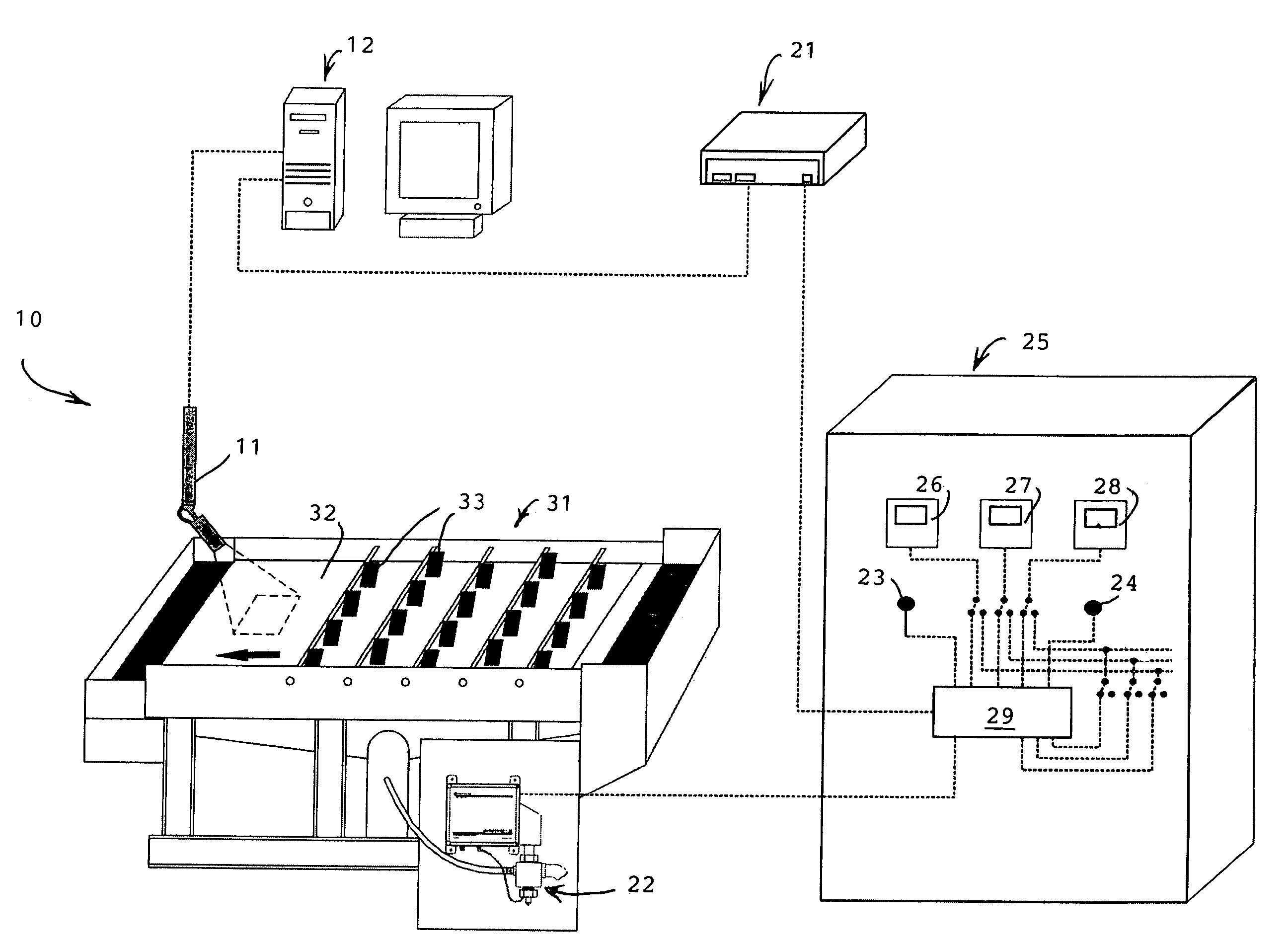Polymer control system
a control system and polymer technology, applied in the field of polymer control system, can solve the problems of insufficient sensitiveness of video image processing technology to be of use in controlling polymer dosage, inability to accurately detect, and slow change of “camera readings” to achieve the effect of lowest possible polymer cos
- Summary
- Abstract
- Description
- Claims
- Application Information
AI Technical Summary
Benefits of technology
Problems solved by technology
Method used
Image
Examples
Embodiment Construction
[0015]Referring to the drawings, the improved apparatus according to the present invention is denoted generally by the reference numeral 10. The apparatus 10 comprises a video camera 11 which is focused on a fixed portion of a gravity belt thickener 31, a Web access controller 21, and a streaming current monitor 22 (FIG. 1). During operation, the signal from the video camera 11, at any given moment of time, is related to a single number known as the “camera reading”; facilitating interpretation of the camera image.
[0016]In the preferred embodiment, a video monitoring system including a PC computer 12, a video input card, Polytracker™ software, and an analog output card is used to process the video signal and send 4-2.0 milliamp signals back to the Web access controller 21.
[0017]Programmed into the Polytracker™ software is a “pixel threshold” which establishes the value by which the pixels of the camera's image are divided into one or the other of two bins—black and white. Calibratio...
PUM
| Property | Measurement | Unit |
|---|---|---|
| lag time | aaaaa | aaaaa |
| current | aaaaa | aaaaa |
| streaming current | aaaaa | aaaaa |
Abstract
Description
Claims
Application Information
 Login to View More
Login to View More - R&D
- Intellectual Property
- Life Sciences
- Materials
- Tech Scout
- Unparalleled Data Quality
- Higher Quality Content
- 60% Fewer Hallucinations
Browse by: Latest US Patents, China's latest patents, Technical Efficacy Thesaurus, Application Domain, Technology Topic, Popular Technical Reports.
© 2025 PatSnap. All rights reserved.Legal|Privacy policy|Modern Slavery Act Transparency Statement|Sitemap|About US| Contact US: help@patsnap.com



